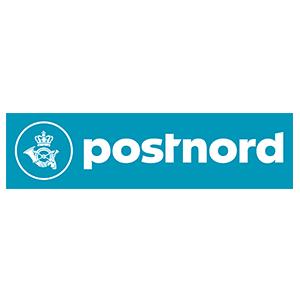Distant Oversight Labeling Qualities
And additionally having fun with production facilities you to encode trend coordinating heuristics, we are able to along with produce tags functions one distantly keep track of study circumstances. Right here, we’ll load into the a listing of understood companion lays and look to find out if the pair regarding people from inside the an applicant complements one of them.
DBpedia: Our very own database out of recognized partners originates from DBpedia, that is a residential district-motivated resource just like Wikipedia but also for curating arranged research. We are going to use an effective preprocessed snapshot once the our degree legs for all labels form invention.
We can examine a number of the example entries off DBPedia and employ them when you look at the a straightforward distant supervision brands mode.
with open("data/dbpedia.pkl", "rb") as f: known_partners = pickle.load(f) list(known_partners)[0:5] [('Evelyn Keyes', 'John Huston'), ('George Osmond', 'Olive Osmond'), ('Moira Shearer', 'Sir Ludovic Kennedy'), ('Ava Moore', 'Matthew McNamara'), ('Claire Baker', 'Richard Baker')] labeling_means(tips=dict(known_spouses=known_partners), pre=[get_person_text]) def lf_distant_oversight(x, known_spouses): p1, p2 = x.person_labels if (p1, p2) in known_partners or (p2, p1) in known_partners: go back Positive otherwise: return Abstain from preprocessors transfer last_label # Past term sets to have recognized spouses last_brands = set( [ (last_name(x), last_name(y)) for x, y in known_spouses if last_identity(x) and last_term(y) ] ) labeling_function(resources=dict(last_brands=last_labels), pre=[get_person_last_brands]) def lf_distant_supervision_last_names(x, last_labels): p1_ln, p2_ln = x.person_lastnames return ( Positive if (p1_ln != p2_ln) and ((p1_ln, p2_ln) in last_brands or (p2_ln, p1_ln) in last_labels) else Abstain ) Implement Brands Features toward Data
from snorkel.labeling import PandasLFApplier lfs = [ lf_husband_wife, lf_husband_wife_left_window, lf_same_last_term, lf_ilial_relationships, lf_family_left_windows, lf_other_relationships, lf_distant_supervision, lf_distant_supervision_last_brands, ] applier = PandasLFApplier(lfs) from snorkel.labeling import LFAnalysis L_dev = applier.use(df_dev) L_train = applier.apply(df_train) LFAnalysis(L_dev, lfs).lf_conclusion(Y_dev) Studies the fresh Title Model
Today, we are going to show a type of the fresh LFs to help you estimate their weights and combine its outputs. While the model is educated, we are able to combine the fresh outputs of your LFs to your just one, noise-alert studies term set for our extractor.
from snorkel.brands.model import LabelModel label_model = LabelModel(cardinality=2, verbose=Genuine) label_model.fit(L_teach, Y_dev, n_epochs=five hundred0, log_freq=500, seeds=12345) Identity Design Metrics
getbride.org Hoppa över till den här webbplatsen
Because the the dataset is highly unbalanced (91% of your own names is bad), actually a trivial baseline that usually outputs negative could possibly get a high reliability. So we gauge the name model utilizing the F1 get and you will ROC-AUC in lieu of precision.
from snorkel.data import metric_score from snorkel.utils import probs_to_preds probs_dev = label_model.anticipate_proba(L_dev) preds_dev = probs_to_preds(probs_dev) printing( f"Term design f1 score: metric_rating(Y_dev, preds_dev, probs=probs_dev, metric='f1')>" ) print( f"Term model roc-auc: metric_rating(Y_dev, preds_dev, probs=probs_dev, metric='roc_auc')>" ) Label design f1 score: 0.42332613390928725 Identity design roc-auc: 0.7430309845579229 Within this latest part of the class, we shall have fun with the noisy training names to rehearse our avoid machine training design. I begin by selection aside training analysis issues and therefore don’t recieve a tag out-of one LF, as these investigation activities include zero signal.
from snorkel.brands import filter_unlabeled_dataframe probs_teach = label_model.predict_proba(L_illustrate) df_teach_blocked, probs_instruct_blocked = filter_unlabeled_dataframe( X=df_train, y=probs_train, L=L_teach ) Second, we illustrate a simple LSTM network having classifying applicants. tf_model consists of properties having handling enjoys and building brand new keras model to possess education and analysis.
from tf_design import get_design, get_feature_arrays from utils import get_n_epochs X_illustrate = get_feature_arrays(df_train_filtered) model = get_model() batch_dimensions = 64 model.fit(X_show, probs_train_filtered, batch_proportions=batch_size, epochs=get_n_epochs()) X_sample = get_feature_arrays(df_decide to try) probs_try = model.predict(X_decide to try) preds_try = probs_to_preds(probs_attempt) print( f"Shot F1 whenever trained with delicate labels: metric_rating(Y_decide to try, preds=preds_take to, metric='f1')>" ) print( f"Shot ROC-AUC when given it flaccid names: metric_score(Y_sample, probs=probs_shot, metric='roc_auc')>" ) Decide to try F1 when given it delicate labels: 0.46715328467153283 Sample ROC-AUC when given it mellow names: 0.7510465661913859 Summation
Inside example, we exhibited how Snorkel are used for Recommendations Extraction. We exhibited how to come up with LFs you to definitely leverage terminology and you can outside degree bases (faraway oversight). In the end, we presented exactly how a model instructed making use of the probabilistic outputs away from the brand new Label Design is capable of similar results if you’re generalizing to studies activities.
# Search for `other` relationship words between people states other = "boyfriend", "girlfriend", "boss", "employee", "secretary", "co-worker"> labeling_function(resources=dict(other=other)) def lf_other_relationships(x, other): return Bad if len(other.intersection(set(x.between_tokens))) > 0 else Abstain 














